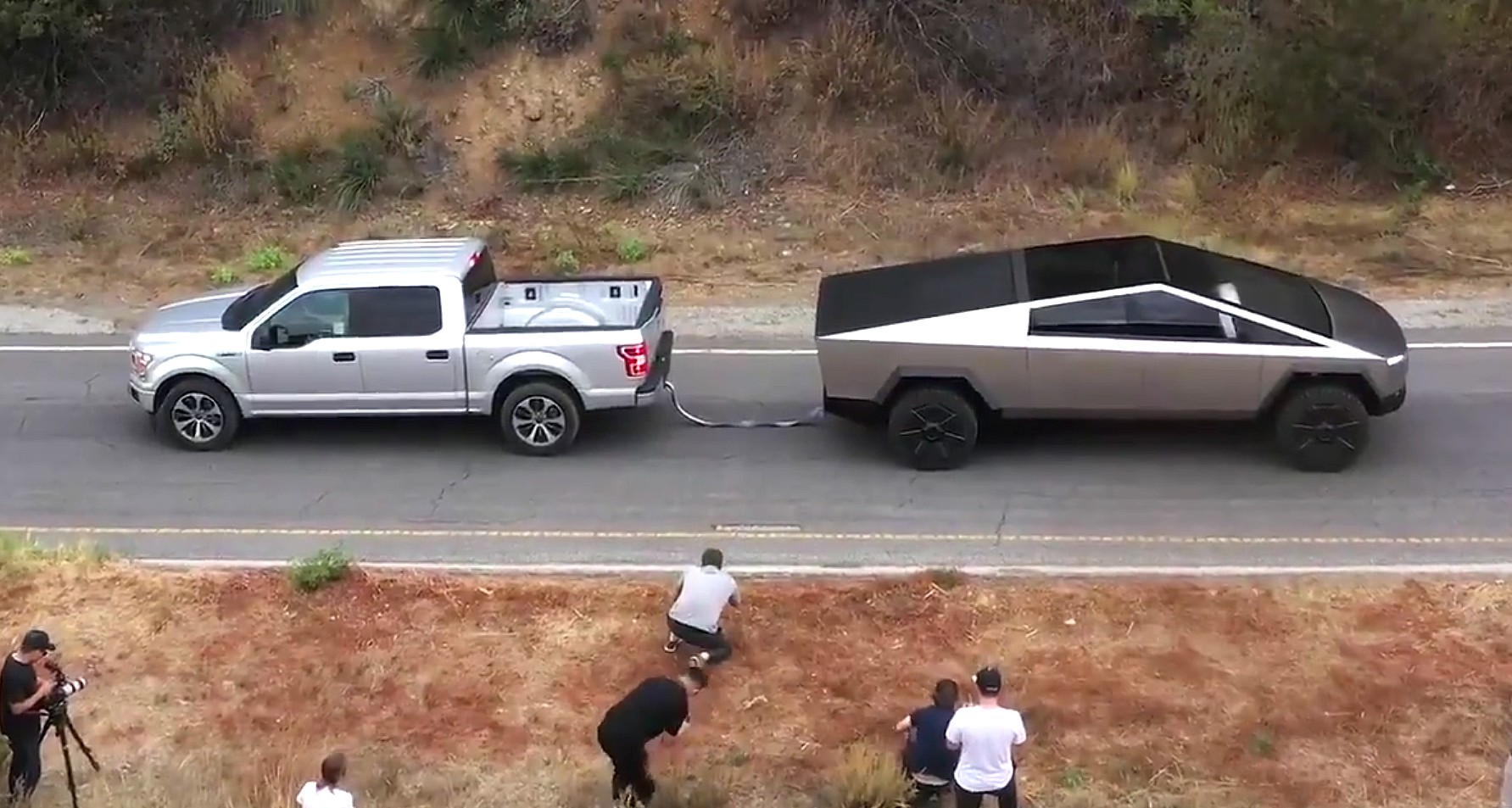
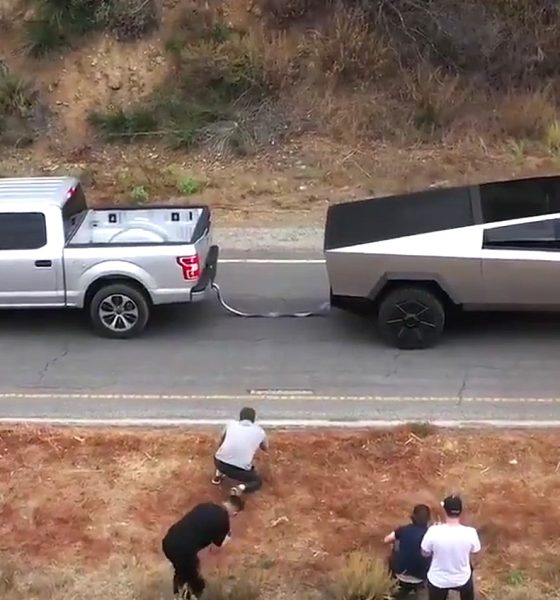
News
Opinion: The Tesla Cybertruck accelerated the Ford F-150 Lightning’s release, like it or not
During the Ford F-150 Lightning’s unveiling, the veteran automaker proudly presented a vehicle that has the potential to carry the company well into the age of electric cars. But inasmuch as the F-150 Lightning is impressive and worthy of its flagship EV status, Ford may have a competitor and unlikely ally to thank for its release. This competitor is the steel beast from Silicon Valley, the Tesla Cybertruck.
A different landscape
It should be noted that just a few years ago, the EV landscape was much different for Ford and its fellow veteran automakers. In 2019, it appeared that the electric pickup market was destined to be yet another niche segment populated by expensive EVs that were out of reach for the conventional buyer. Back then, the Rivian R1T seemed to be the electric pickup truck to beat, after it debuted in late 2018 and impressed the car community with its novel features.
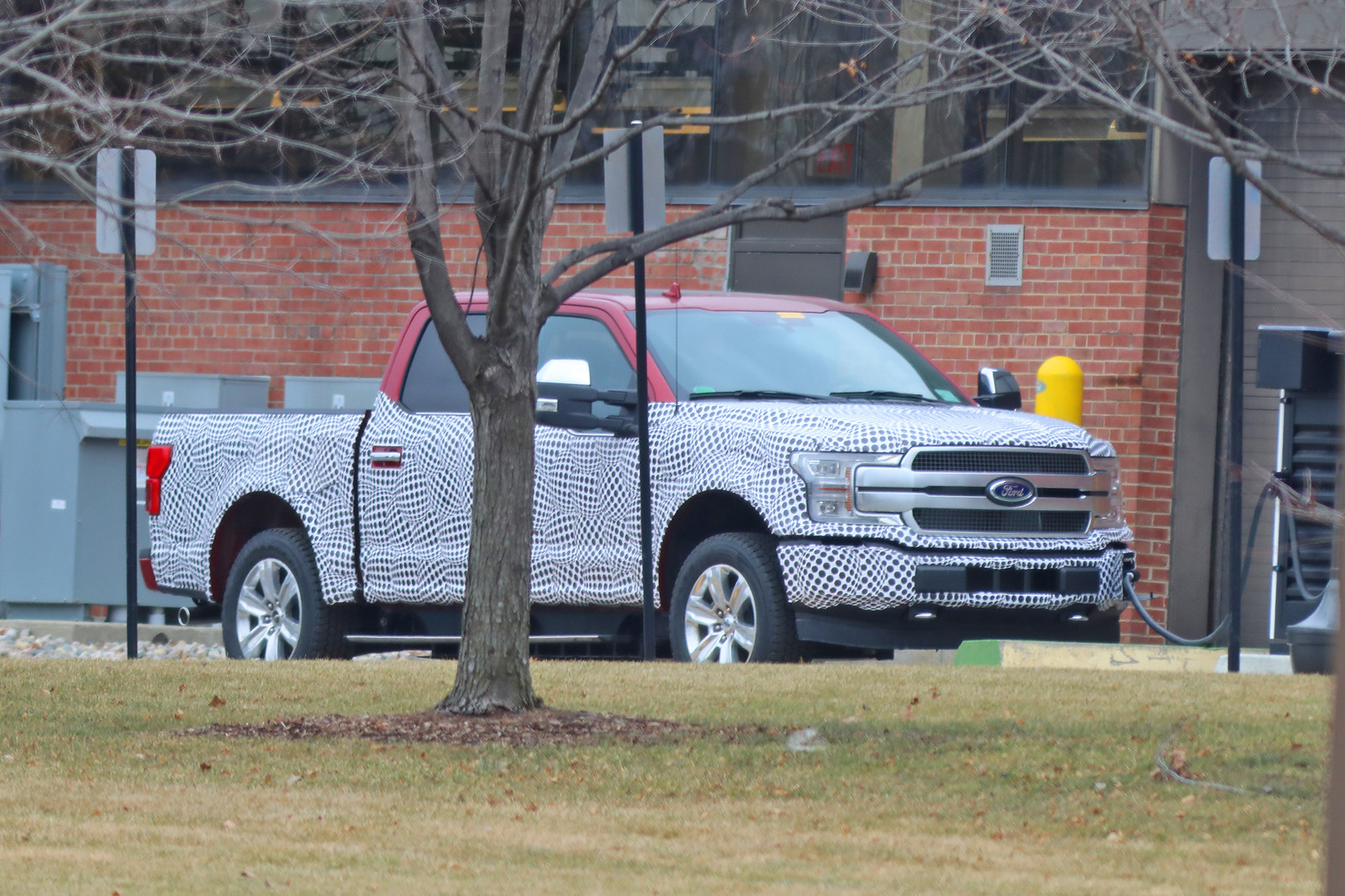
Inasmuch as Rivian captured the attention of EV enthusiasts, legacy auto, at least from the perspective of a layman, seemed to be quite uninterested in the battery-electric truck market. This was one of the reasons why Ford inspired a ton of headlines in January 2019 when then-president of global markets and now-CEO Jim Farley announced that the F-Seres was getting electrified. “We’re going to be electrifying the F-Series — battery electric and hybrid,” he said.
It was a shock to the United States’ automotive industry, with longtime industry observer and Autoline This Week host John McElroy highlighting the gravity of Farley’s statement. “When he says ‘battery-electric,’ what I’m taking that to mean is a battery electric vehicle. Pure electric. They’ve said they would have a hybrid plug-in version of the F-150. But this is different than what they’ve talked about in the past,” McElroy said.
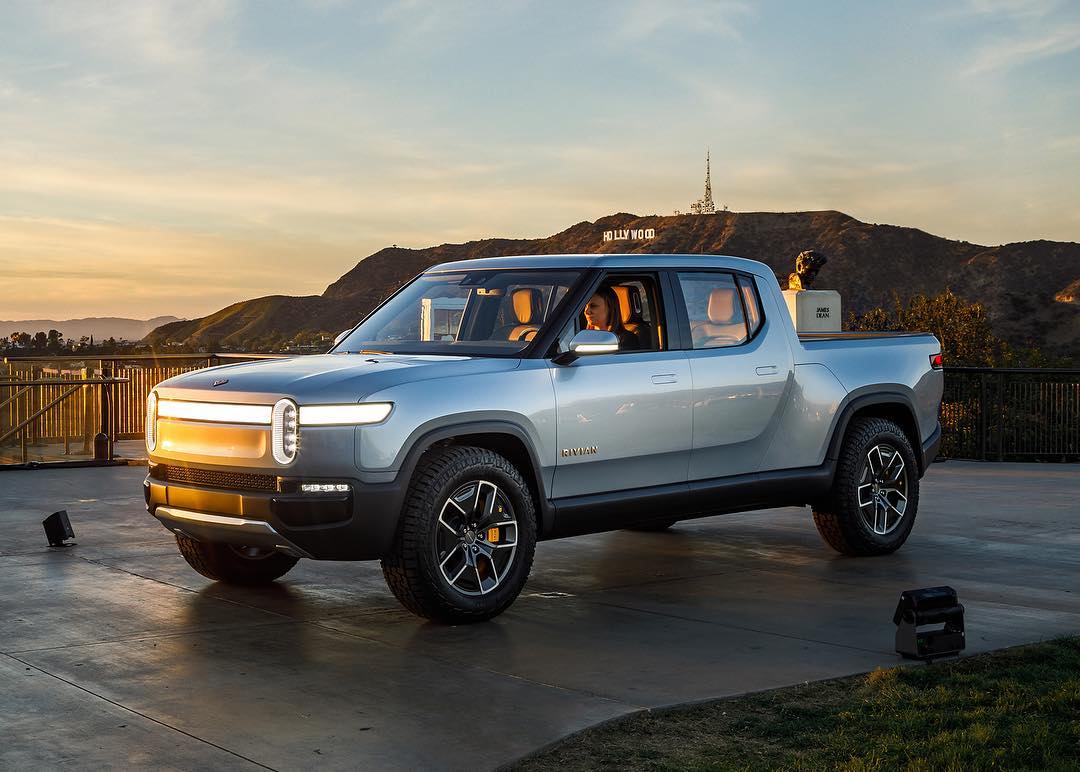
A noncommittal stance
But while Ford’s announcement showed that it could talk the talk, the company didn’t necessarily walk the walk. Even after Ford showed off the capabilities of the electric F-150 by having the vehicle pull a freight train loaded with other F-150s, the company proved very elusive about its plans for the vehicle. Speaking to Yahoo Finance’s The First Trade following the electric F-150’s 1-million-pound demonstration, Ford Chief Product Development Officer Hau Thai-Tang was asked about the upcoming vehicle’s release.
The Ford executive’s answers about the all-electric truck were very reserved. When pressed further, the executive simply remarked that the battery-electric F-150 was “still a couple of years out,” though he did highlight that the F-150 Hybrid would be released first.
This noncommittal stance was prevalent for much of 2019. Ford’s longtime rival, General Motors, also announced then that it had a program for an all-electric pickup truck. During a quarterly earnings call, GM CEO Mary Barra stated that the company intends to “create an all-electric future that includes a complete range of EVs, including full-size pickups. She also noted that details about GM’s battery-electric pickup would be shared “when competitively appropriate.”
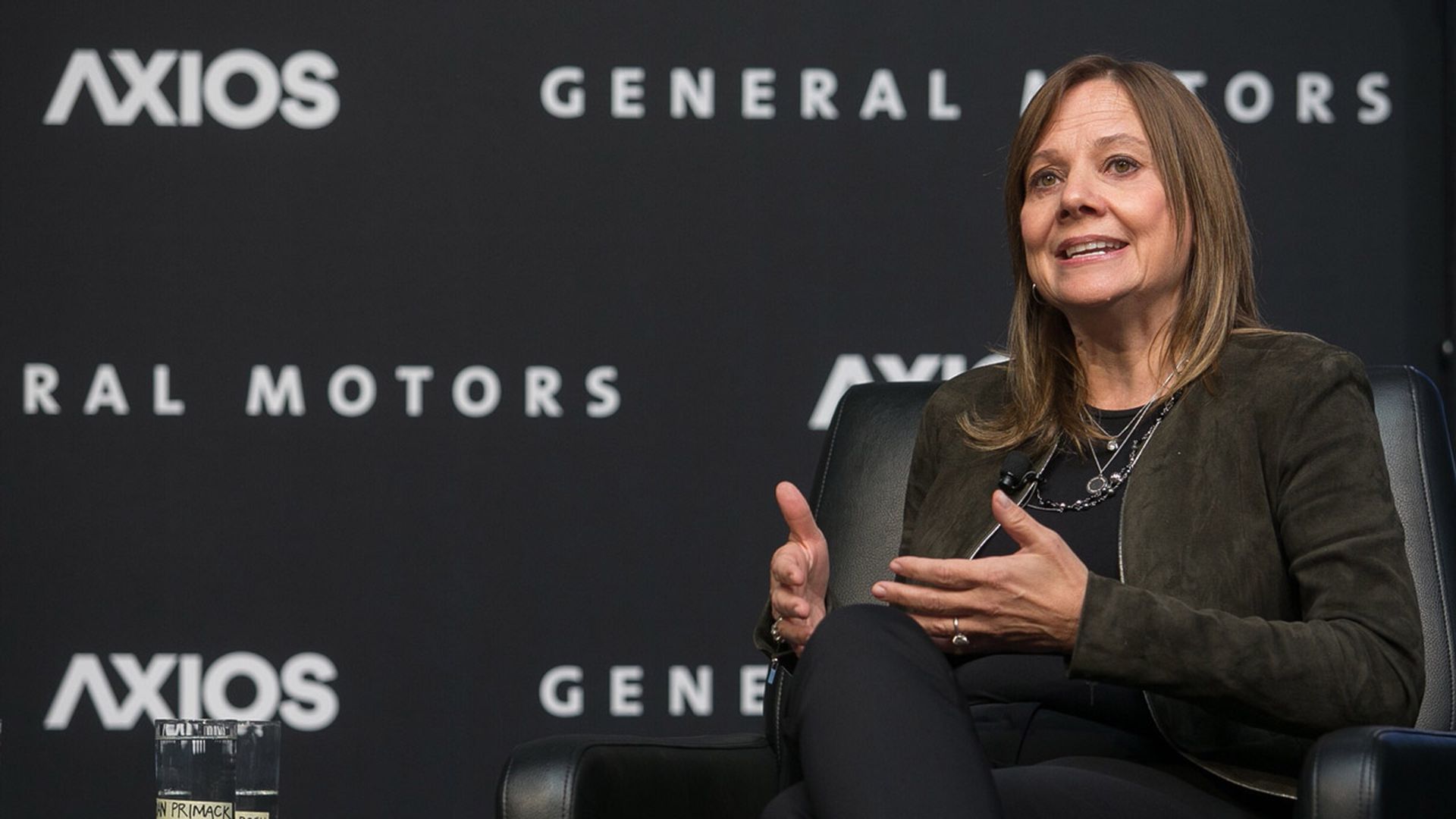
A watershed moment
But something happened at the end of 2019. In November 2019, Tesla took the wraps off its all-electric pickup truck. It was a vehicle that Elon Musk has been mentioning for years, and in the months leading up to its unveiling, the CEO had been setting the public’s expectations. Musk noted that the Cybertruck would probably be polarizing, and he even stated that if it were to flop, Tesla would simply make a more conventional pickup truck. The Cybertruck proved to be everything that Musk said it was, and more. With its angular design and unpainted steel body, the Cybertruck was unlike any vehicle on the road, and it barely looked like a pickup truck.
Its appearance, together with the Armor Glass demonstration that ended with the Cybertruck’s driver’s side windows getting cracked, resulted in the futuristic vehicle becoming a meme overnight. Tesla fans learned to love it, and critics made sure to point out how strange and ugly it looked. But amidst all the memes about the Cybertruck’s looks and its failed Armor Glass demonstration lay something notable—Tesla’s all-electric pickup truck had some serious specs.
While the Cybertruck’s looks were amusing to critics, its specs were very real, and most of all, it was cheap for the features that it offers. Starting at less than $40,000 and capable of towing 14,000 pounds, it was a threat to the status quo, especially as it could become attractive to businesses and people who value low operating costs and a rapid return of investment. After all, Tesla may be known for its delays, but the company never overpromises on its vehicles’ capabilities.
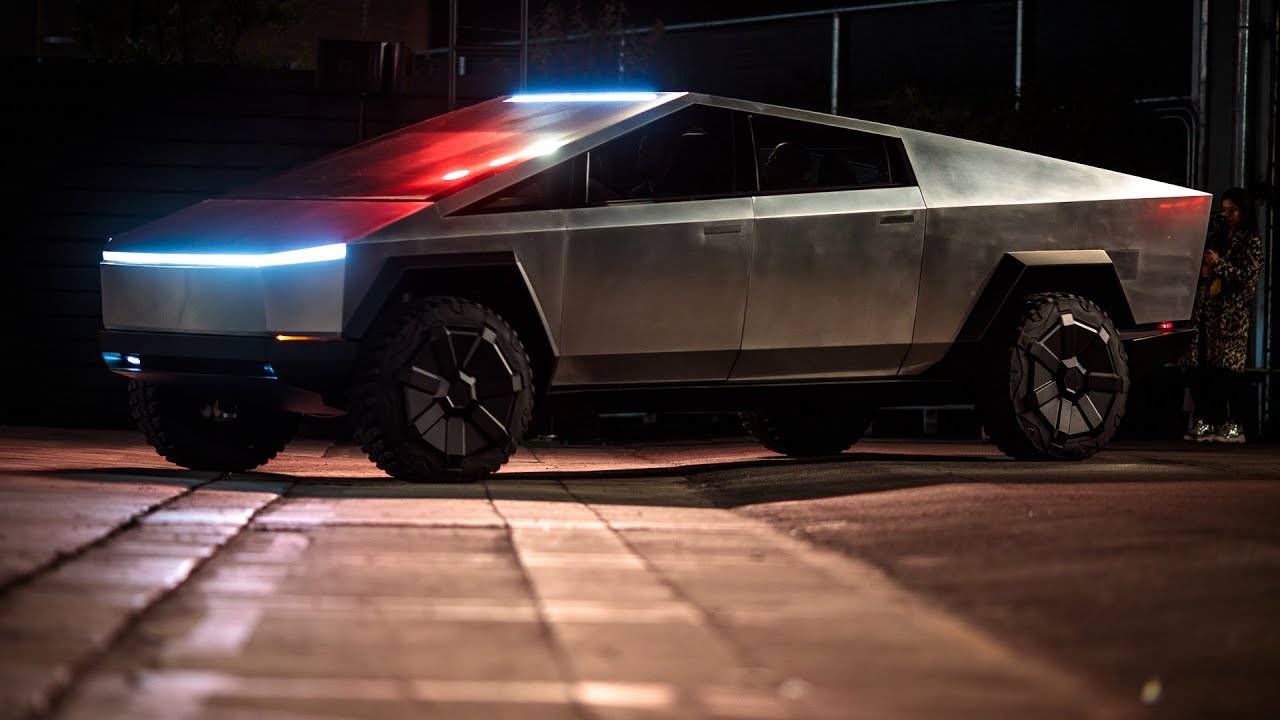
An accelerated shift
Something seemed to change after the Cybertruck was unveiled. Just months after the Cybertruck’s launch, GM revealed its Ultium batteries, which was announced together with a number of new all-electric models. By October 2020, GMC launched the Hummer EV, a gargantuan all-electric pickup truck designed for serious off-roading. GM may never admit it, but signs pointed to the Hummer EV’s development being rushed. The automaker unveiled the vehicle with a CGI video and a prototype that barely moved.
This was very different from the strategy of Tesla and Rivian, of course, both of whom unveiled fully-working trucks. Tesla even had the Cybertruck take attendees for a test ride for several hours following its unveiling. GM Chief Engineer Al Oppenheiser admitted as such in a statement to EV publication Green Car Reports. Oppenheiser revealed that the Hummer EV was only 18 months into its development cycle when it was unveiled, which was a very short time for a legacy automaker.
“Interestingly enough, we don’t have a vehicle yet. We’re building our first test vehicle as we speak; the vehicle you see in the video is our display vehicle,” he said. GM, of course, eventually started demonstrating the Hummer EV’s capabilities in real-life settings later on. But by then, it was practically evident that the automaker was moving as fast as it could to enter the all-electric pickup truck market with a competitive edge.
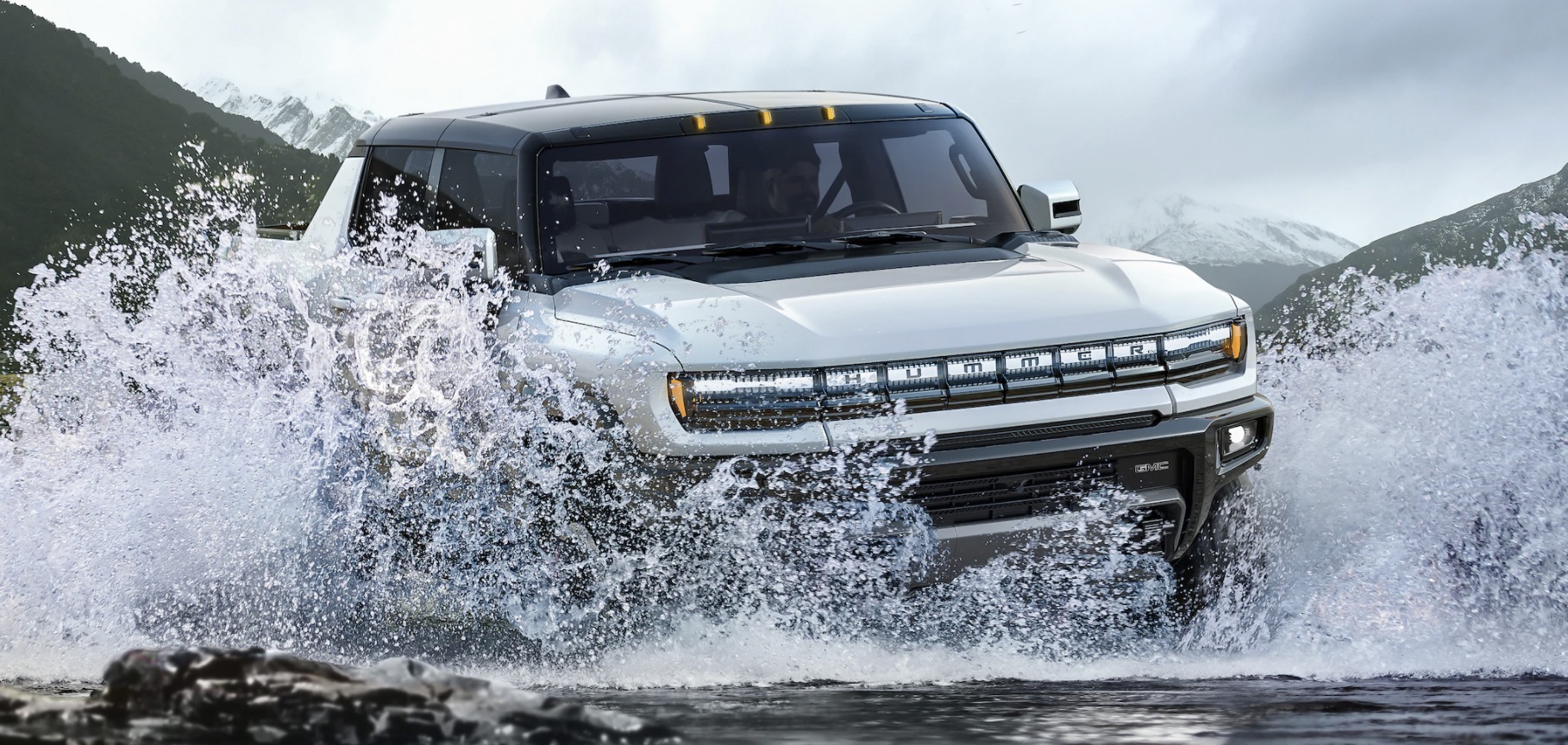
Ford seemed to have accelerated its battery-electric truck program as well, and now the Ford F-150 Lightning is here. And unlike the Hummer EV, it seems to be ready to go. The Rouge facility seems ready to produce the vehicle, though the ongoing chip shortage is still looming in the background. There’s also the issue of securing enough batteries for the vehicle, considering that the F-150 is expected to demand equally large battery packs to hit its targeted 300 miles of range.
Overall, it appears that the rush is now on to produce the first mainstream electric pickup truck. And so far, it appears that the battle will be waged by the Ford F-150 Lightning and the Tesla Cybertruck, considering their comparable starting prices. But while the F-150 Lightning loses out in key features such as range and towing capacity, it does have the pedigree and reputation of a tried and tested pickup brand and a design that is as conventional as it is comfortable. And that, ultimately, could be a trump card for the electric revolution as a whole.
The battle is on for America’s most popular automotive segment.
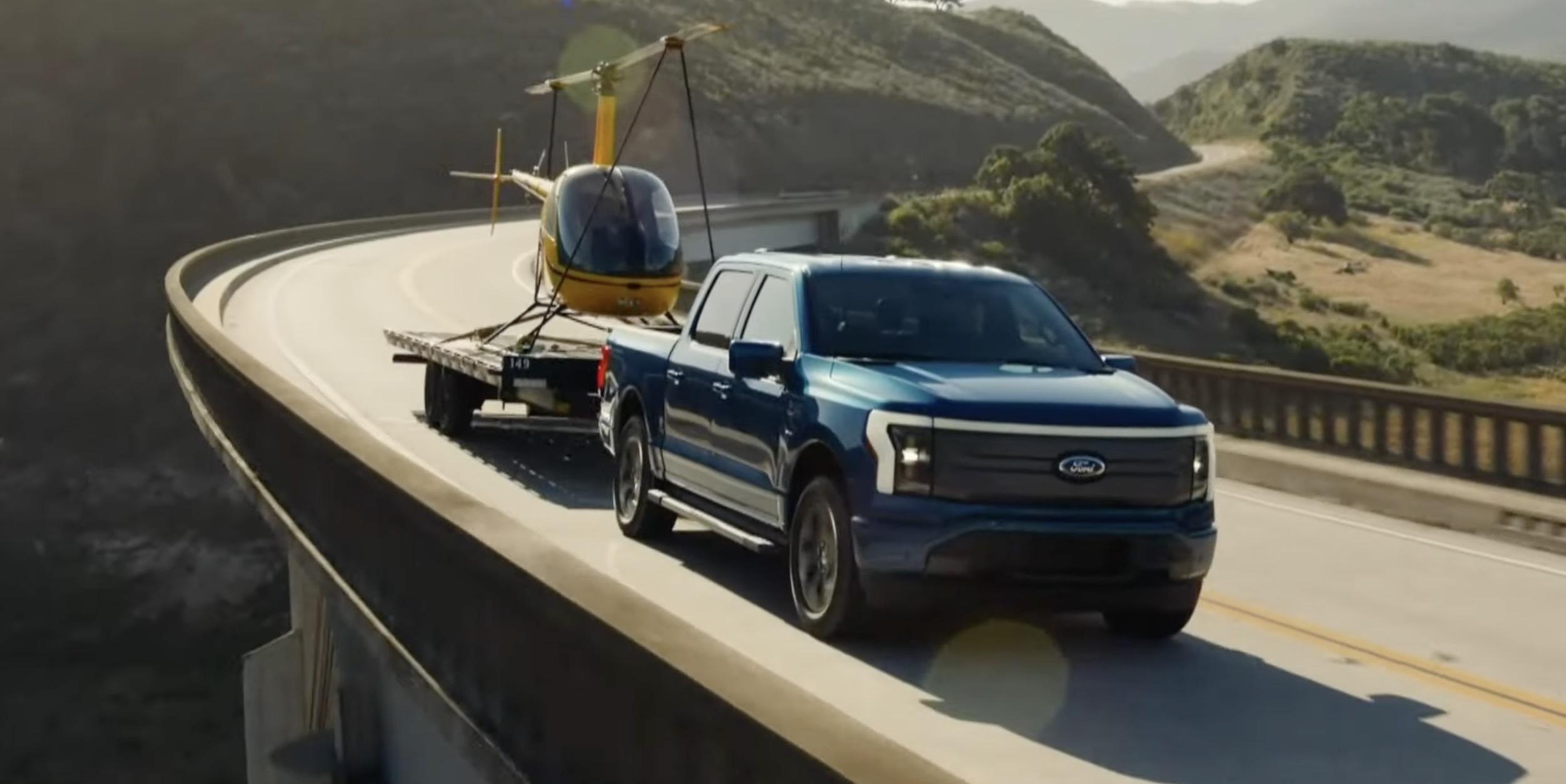
Don’t hesitate to contact us for news tips. Just send a message to tips@teslarati.com to give us a heads up.

News
Tesla (TSLA) receives “Buy” rating and $551 PT from Canaccord Genuity
He also maintained a “Buy” rating for TSLA stock over the company’s improving long-term outlook, which is driven by autonomy and robotics.

Canaccord Genuity analyst George Gianarikas raised his Tesla (NASDAQ:TSLA) price target from $482 to $551. He also maintained a “Buy” rating for TSLA stock over the company’s improving long-term outlook, which is driven by autonomy and robotics.
The analyst’s updated note
Gianarikas lowered his 4Q25 delivery estimates but pointed to several positive factors in the Tesla story. He noted that EV adoption in emerging markets is gaining pace, and progress in FSD and the Robotaxi rollout in 2026 represent major upside drivers. Further progress in the Optimus program next year could also add more momentum for the electric vehicle maker.
“Overall, yes, 4Q25 delivery expectations are being revised lower. However, the reset in the US EV market is laying the groundwork for a more durable and attractive long-term demand environment.
“At the same time, EV penetration in emerging markets is accelerating, reinforcing Tesla’s potential multi‑year growth runway beyond the US. Global progress in FSD and the anticipated rollout of a larger robotaxi fleet in 2026 are increasingly important components of the Tesla equity story and could provide sentiment tailwinds,” the analyst wrote.
Tesla’s busy 2026
The upcoming year would be a busy one for Tesla, considering the company’s plans and targets. The autonomous two-seat Cybercab has been confirmed to start production sometime in Q2 2026, as per Elon Musk during the 2025 Annual Shareholder Meeting.
Apart from this, Tesla is also expected to unveil the next-generation Roadster on April 1, 2026. Tesla is also expected to start high-volume production of the Tesla Semi in Nevada next year.
Apart from vehicle launches, Tesla has expressed its intentions to significantly ramp the rollout of FSD to several regions worldwide, such as Europe. Plans are also underway to launch more Robotaxi networks in several more key areas across the United States.
News
Waymo sues Santa Monica over order to halt overnight charging sessions
In its complaint, Waymo argued that its self-driving cars’ operations do not constitute a public nuisance, and compliance with the city’s order would cause the company irreparable harm.

Waymo has filed a lawsuit against the City of Santa Monica in Los Angeles County Superior Court, seeking to block an order that requires the company to cease overnight charging at two facilities.
In its complaint, Waymo argued that its self-driving cars’ operations do not constitute a public nuisance, and compliance with the city’s order would cause the company irreparable harm.
Nuisance claims
As noted in a report from the Los Angeles Times, Waymo’s two charging sites at Euclid Street and Broadway have operated for about a year, supporting the company’s growing fleet with round-the-clock activity. Unfortunately, this has also resulted in residents in the area reportedly being unable to sleep due to incessant beeping from self-driving taxis that are moving in and out of the charging stations around the clock.
Frustrated residents have protested against the Waymos by blocking the vehicles’ paths, placing cones, and “stacking” cars to create backups. This has also resulted in multiple calls to the police.
Last month, the city issued an order to Waymo and its charging partner, Voltera, to cease overnight operations at the charging locations, stating that the self-driving vehicles’ activities at night were a public nuisance. A December 15 meeting yielded no agreement on mitigations like software rerouting. Waymo proposed changes, but the city reportedly insisted that nothing would satisfy the irate residents.
“We are disappointed that the City has chosen an adversarial path over a collaborative one. The City’s position has been to insist that no actions taken or proposed by Waymo would satisfy the complaining neighbors and therefore must be deemed insufficient,” a Waymo spokesperson stated.
Waymo pushes back
In its legal complaint, Waymo stated that its “activities at the Broadway Facilities do not constitute a public nuisance.” The company also noted that it “faces imminent and irreparable harm to its operations, employees, and customers” from the city’s order. The suit also stated that the city was fully aware that the Voltera charging sites would be operating around the clock to support Waymo’s self-driving taxis.
The company highlighted over one million trips in Santa Monica since launch, with more than 50,000 rides starting or ending there in November alone. Waymo also criticized the city for adopting a contentious strategy against businesses.
“The City of Santa Monica’s recent actions are inconsistent with its stated goal of attracting investment. At a time when the City faces a serious fiscal crisis, officials are choosing to obstruct properly permitted investment rather than fostering a ‘ready for business’ environment,” Waymo stated.
News
Tesla FSD v14.2.2 is getting rave reviews from drivers
So far, early testers have reported buttery-smooth drives with confident performance, even at night or on twisty roads.

Tesla Full Self-Driving (Supervised) v14.2.2 is receiving positive reviews from owners, with several drivers praising the build’s lack of hesitation during lane changes and its smoother decision-making, among others.
The update, which started rolling out on Monday, also adds features like dynamic arrival pin adjustment. So far, early testers have reported buttery-smooth drives with confident performance, even at night or on twisty roads.
Owners highlight major improvements
Longtime Tesla owner and FSD user @BLKMDL3 shared a detailed 10-hour impression of FSD v14.2.2, noting that the system exhibited “zero lane change hesitation” and “extremely refined” lane choices. He praised Mad Max mode’s performance, stellar parking in locations including ticket dispensers, and impressive canyon runs even in dark conditions.
Fellow FSD user Dan Burkland reported an hour of FSD v14.2.2’s nighttime driving with “zero hesitations” and “buttery smooth” confidence reminiscent of Robotaxi rides in areas such as Austin, Texas. Veteran FSD user Whole Mars Catalog also demonstrated voice navigation via Grok, while Tesla owner Devin Olsen completed a nearly two-hour drive with FSD v14.2.2 in heavy traffic and rain with strong performance.
Closer to unsupervised
FSD has been receiving rave reviews, even from Tesla’s competitors. Xpeng CEO He Xiaopeng, for one, offered fresh praise for FSD v14.2 after visiting Silicon Valley. Following extended test drives of Tesla vehicles running the latest FSD software, He stated that the system has made major strides, reinforcing his view that Tesla’s approach to autonomy is indeed the proper path towards autonomy.
According to He, Tesla’s FSD has evolved from a smooth Level 2 advanced driver assistance system into what he described as a “near-Level 4” experience in terms of capabilities. While acknowledging that areas of improvement are still present, the Xpeng CEO stated that FSD’s current iteration significantly surpasses last year’s capabilities. He also reiterated his belief that Tesla’s strategy of using the same autonomous software and hardware architecture across private vehicles and robotaxis is the right long-term approach, as it would allow users to bypass intermediate autonomy stages and move closer to Level 4 functionality.








